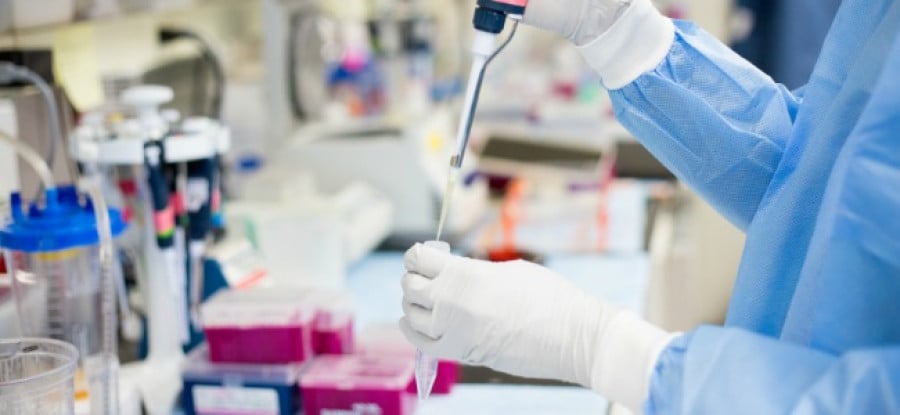An overview of how WADA labs receive accreditation

In the ongoing struggle against doping in sport, the World Anti-Doping Agency (WADA) has taken an increasingly important role since its establishment in 1999. Its World Anti-Doping Code1 has been adopted by over six hundred sports organisations worldwide and provides international harmonisation in anti-doping rules, procedures and practice. Its annual Prohibited List2 of substances and methods provides an up to date catalogue of banned drugs.
Determining what substances should be banned and setting standards for anti-doping practice is undoubtedly of paramount importance in the battle for clean sports. What is of no less importance is ensuring that the laboratories that test samples collected by doping control officers adhere to recognised practices and standards.
To achieve this aim WADA:
- provides an accreditation process,
- requires laboratories that comply with its International Standards For Laboratories,3
- monitors their performance through a mandatory External Quality Assessment Scheme (EQAS).
This article aims to provide an overview of the process by which laboratories receive accreditation and maintain it.
The Accreditation Process
The accreditation process is a lengthy one. First a laboratory must apply for accreditation, and then prepare fully for accreditation before receiving it. Once accreditation has been obtained steps must be taken to maintain it. The procedure for each of these steps is set out in the ISL. References in the following paragraphs are to specific paragraphs of the ISL.
Applying for WADA Accreditation
The candidate laboratory must start the process by contacting WADA and expressing interest in receiving accreditation (4.1.1).
WADA will then provide the laboratory with an application form to complete and will also verify that there is a National Anti-Doping program that is compliant with both the WADA Code and ISL in the country where the laboratory is based; that the country has ratified the UNESCO Convention against Doping in Sport and that the country has paid its contributions to WADA (4.1.2).
Once the application form has been completed and WADA has made its initial checks a candidate laboratory is required to provide a letter of support from an Anti-Doping Organisation that is a signatory to the WADA code (4.1.3). This letter will guarantee that a minimum of three thousand samples will be provided to the laboratory for testing for a three-year period within two years of accreditation being granted. The candidate laboratory is also required to submit a business plan accompanied by further letters of support that guarantee:
- sufficient financial support for at least three years;
- that the necessary analytical facilities and instrumentation will be available; and
- that there is sufficient support for research and development activities.
Following the receipt of the letters of support and business plan WADA then provides the candidate laboratory with a further detailed questionnaire. This must be completed within eight weeks and, as a minimum requirement, contains details of staff and their qualifications, a description of physical facilities, actual and proposed instruments and equipment, a list of available reference materials, a business plan showing a commitment to analyse three thousand samples annually and a list of sponsors (4.1.4).
Once all of the required documentation has been received WADA will usually conduct an initial visit to the laboratory. This will last two or three days and is funded by the candidate laboratory. Its purpose is to clarify any issues that may have arisen with the accreditation process (4.1.5).
Within twelve weeks of receipt of the questionnaire or initial visit WADA will issue a report on the candidate laboratory either recommending the candidate laboratory for probationary accreditation or identifying any improvements that are needed to be considered a WADA probationary laboratory (4.1.6).
Prior to entering the probationary period the candidate laboratory has to pay a one off initial accreditation fee before receiving probationary accreditation (4.1.7).
To continue reading or watching login or register here
Already a member? Sign in
Get access to all of the expert analysis and commentary at LawInSport including articles, webinars, conference videos and podcast transcripts. Find out more here.
- Tags: Anti-Doping | China | Governance | International Standard for Laboratories (ISL) | Portgual | Regulation | Russia | South Africa | World Anti-Doping Agency (WADA) | World Anti-Doping Code (WADC)
Related Articles
- Why ASADA’s removal of Australian athletes’ right to silence is arguably unlawful
- Sharapova’s doping scandal - are athletes now more concerned about legality than ethics?
- Do WADA’s International Standards sufficiently protect athletes’ personal data?
- Doping in athletics - a review of the findings IAAF Ethics Commission and WADA IC Report #2
Written by
Rupert Beloff
Rupert is a tenant at 4-5 Gray’s Inn Square and Kings Chambers.
He has substantial and wide ranging experience of sports litigation and advisory work including regulatory and disciplinary proceedings, anti-doping, free movement and right to play cases and contractual and sponsorship disputes.

 Global Summit 2024
Global Summit 2024